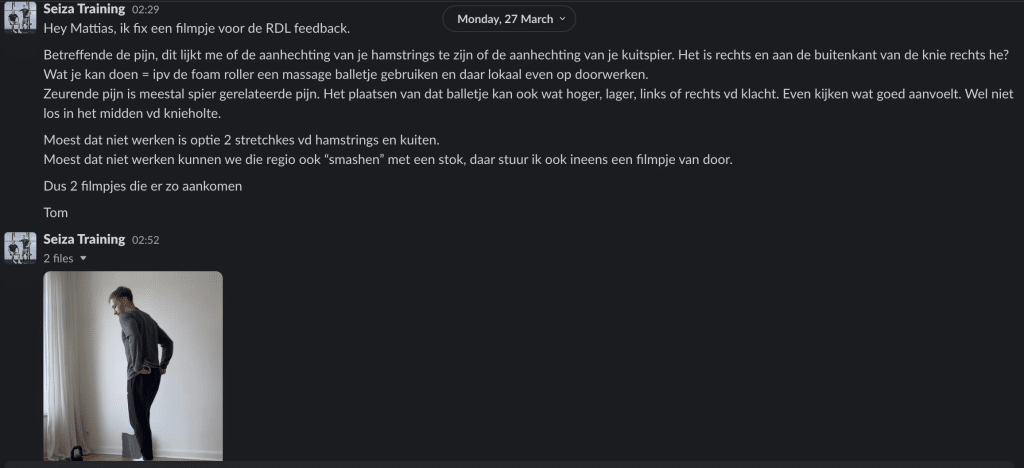Mastering the Art of Online Coaching for Strength and Conditioning: Key Aspects to Ensure Client Success
Are you searching for a convenient and effective way to achieve your fitness goals? Online coaching for strength and conditioning may be just what you need. In today's fast-paced world, many people are turning to online coaching as a convenient and effective way to achieve their fitness goals, but if you're new to this type of coaching, you may be wondering if it's right for you. In this post, we'll explore the key aspects of online coaching for strength and conditioning, and how they can help you achieve your goals, no matter where you are in the world. Whether you're a seasoned athlete or just starting out on your fitness journey, this guide will provide you with the insights and information you need to make an informed decision about online coaching. Read on to discover the benefits of online coaching and why it may be the perfect solution to help you reach your fitness goals.
"Strength training isn't about being the strongest person in the gym; it's about being the strongest version of yourself outside of it. Regular strength training has been shown to improve longevity, bone density, and overall quality of life." - unknown.
Online coaching for strength and conditioning has become increasingly popular in recent years, and for good reason. With the convenience and flexibility of online coaching, clients can work with qualified trainers and coaches from anywhere in the world. However, to ensure client success, there are several key aspects of online coaching that must be mastered. In this post, we'll explore these seven elements and provide examples of how they can be applied to help a fictive client achieve their fitness goals. We used examples but changed the name of our clients to ensure their anonymity.
Goal Setting
One of the most important aspects of online coaching is goal setting. Before beginning a training program, a coach must work with their client to establish clear, specific, and measurable goals. For example, a client may want to lose 3 kilos in the next three months, or they may want to increase their squat max by 10 kilos in six months. By setting these goals, both the coach and the client have a clear target to work towards and can measure progress along the way.
Seiza Example: John is a 35-year-old man who wants to improve his overall fitness level. After discussing his goals with his coach, they establish that John's main objective is to lose 3 kilos of fat while gaining muscle mass. This was discussed with the Seiza coaches and the Nutritional Expert!
Click here to talk goals with one of our coaches.
Assessment and Intake
To create an effective training program, an online coach must first assess their client's current fitness level and limitations. This can be done through a combination of online questionnaires, video analysis, and other tools. Based on this assessment, the coach can develop a customized program that is tailored to the client's individual needs.
Seiza Example: Sarah is a 28-year-old woman who has never lifted weights before. We assessed her mobility and flexibility through video and determined that she needs to work on these areas before beginning any strength training.
Communication
Clear and consistent communication is key to successful online coaching. Coaches should provide timely and constructive feedback and be available to answer their client's questions and concerns. This communication can take place through a variety of channels, such as email, video calls, or messaging apps.
Seiza Example: Mattias is a busy professional who can only work out early in the morning before work. His coach communicates with him through a messaging app and provides feedback on his form and technique, ensuring that Mattias is on track with his program.

Personalization
Every client is different, and an effective online coach should tailor their training programs to their client's needs and preferences. This includes taking into account any injuries or limitations, as well as the client's fitness level and goals.
Seiza Example: Emily is a 45-year-old woman who has had knee surgery in the past. Her coach designs a program that takes into account her injury and focuses on exercises that are safe and effective for her.
Watch the video below where we go in-depth about breathing:
Program Design
An effective online coach will design a customized training program that is progressive, challenging, and aligned with their client's goals. This program should include a variety of exercises, including strength training, cardiovascular exercise, and mobility work.
Seiza Example: Mike is a 30-year-old man who wants to improve his overall fitness level and increase his endurance. His coach designs a program that includes a mix of strength training, HIIT, and steady-state cardio, as well as mobility work. His endurance program was created by a multiple Dutch national champion in Triathlon.
Watch the video below (in Dutch) where we explain how the program works!
Accountability
Regular check-ins and progress tracking are essential for keeping clients accountable and motivated. This can include weekly or monthly progress reports, as well as regular feedback on form and technique.
Seiza Example: Rachel is a 32-year-old woman who has a busy schedule and struggles with consistency. Her coach checks in with her regularly and provides her with feedback on her workouts, helping her stay on track and motivated.
Education
Online coaches should educate their clients on proper technique, nutrition, and other relevant aspects of strength and conditioning
Seiza Example: We offer online courses about Sleep, Nutrition, Training Philosophy and Mental Prowess! Here's a little sneak peak in Dutch about the Mental Prowess. Don't hold yourself back and do the exercise Tom says!

